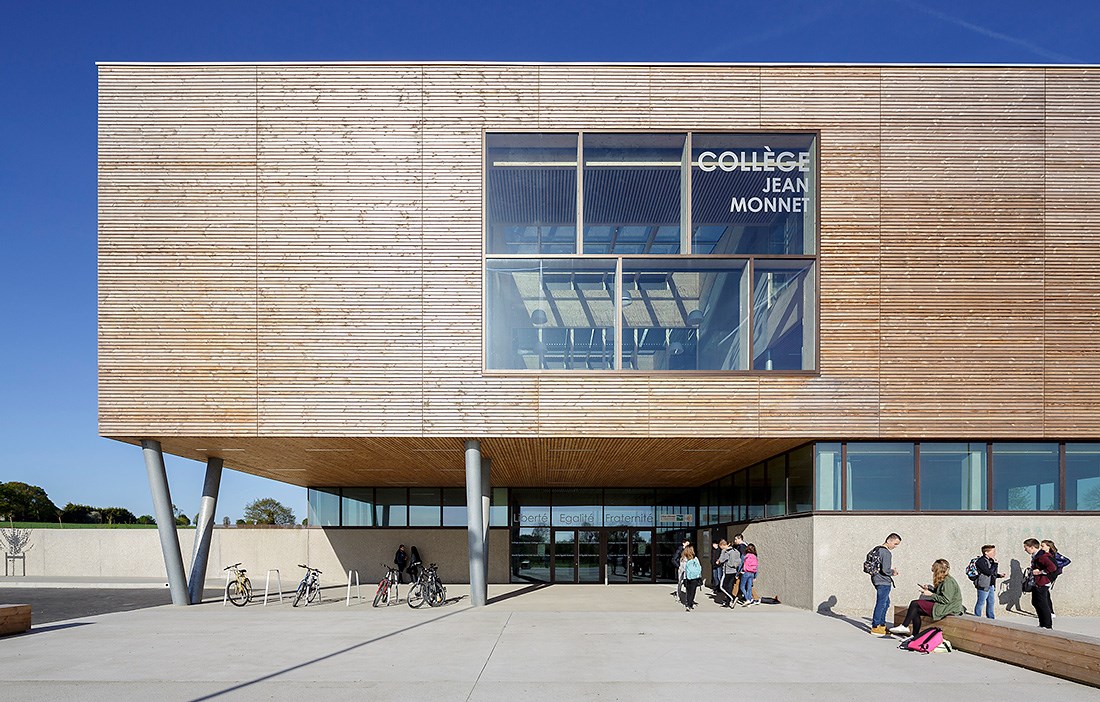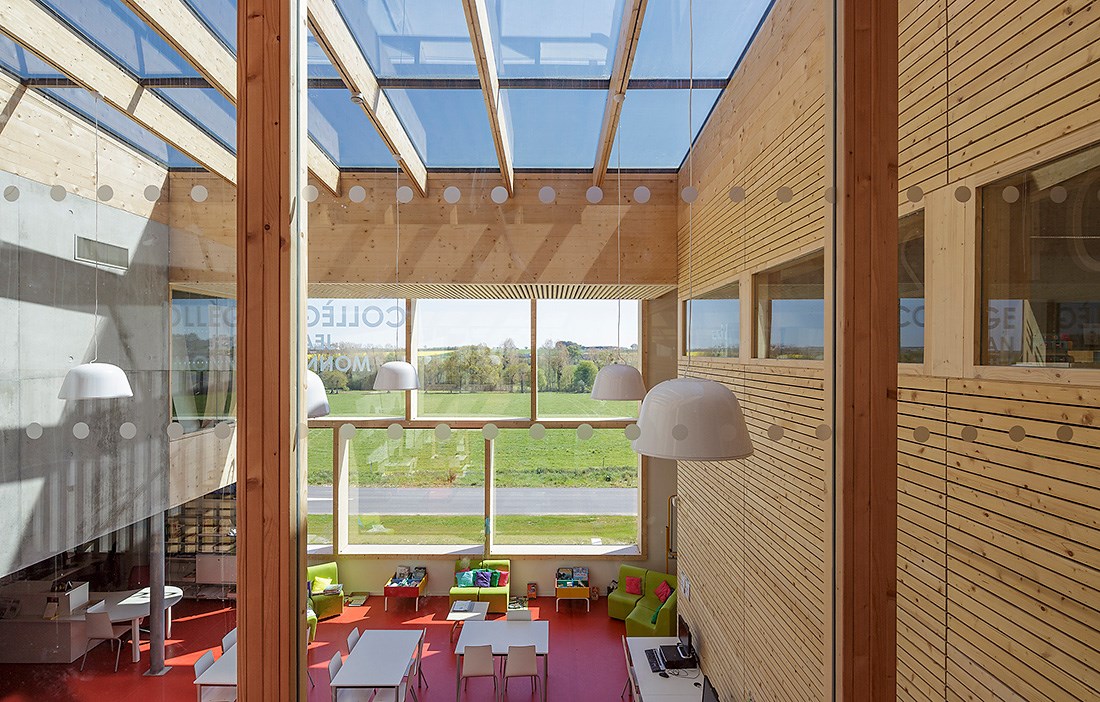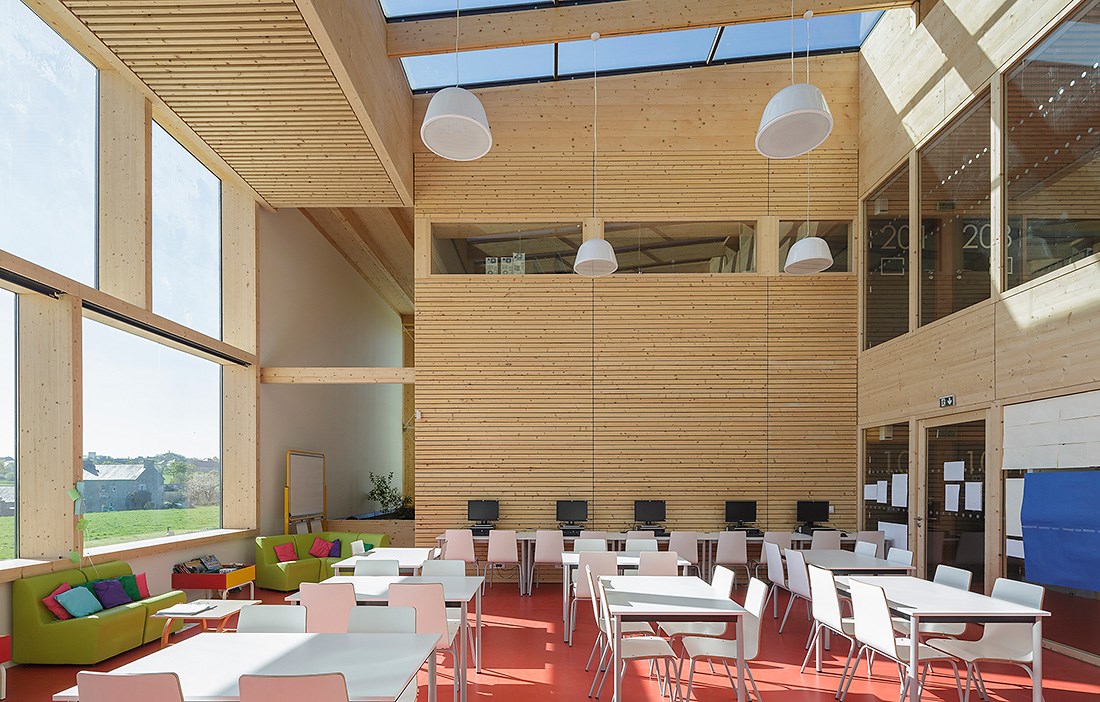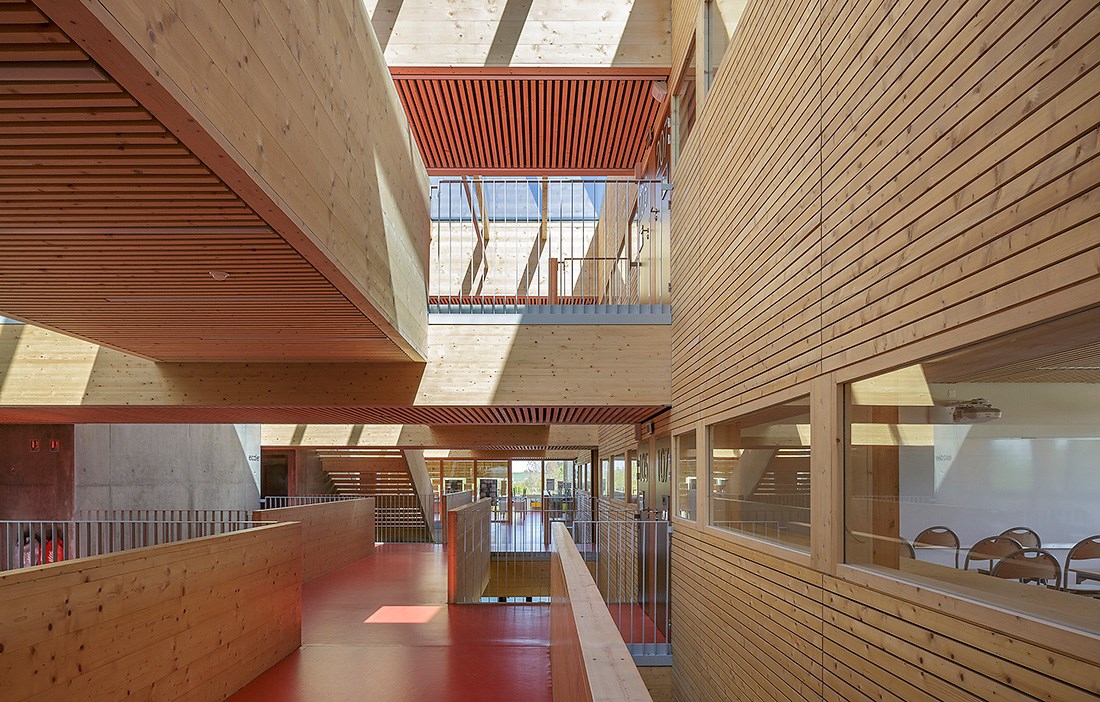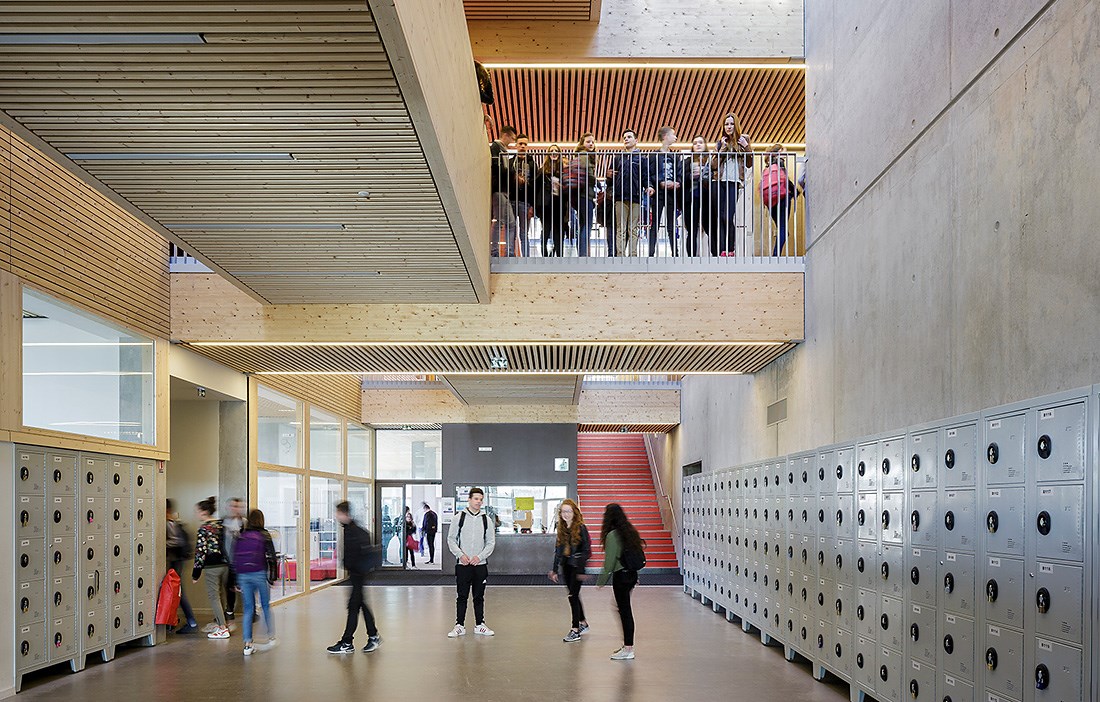It is said that the world ends in western Brittany, France. And it can certainly seem like that – all too often it can feel like the weather gods woke up in a bad mood in the little windswept fishing villages along the Atlantic coast. On raw days when the tide is at its highest, the people of Brittany scurry into their houses, where the rain beats against tightly shut windows. Just over 15 kilometres from the coast lies the small village of Broons. And here, in the middle of the agricultural landscape, just north of the village, stands Jean Monnet School. It was constructed two years ago to replace the old and tired 1970s building and it now houses just over 600 students. Almost all of them come by bus from the nearby villages, making Broons an important academic hub in the region.
The school was designed by the Austrian architectural practice Dietrich Untertrifaller. When they were commissioned to design the school, they put forward a solution where the whole building was made of wood, but the client was sceptical. The cause of the hesitation was the French laws and regulations on constructing tall buildings in wood. The tradition of building in stone is strong here, not least in Brittany. With the situation as it was, Dietrich Untertrifaller therefore decided to have the ground floor and foundations of the school made from concrete, serving as a kind of reference to the history of the village. One of the ground floor façades was clad in local granite to look like an old stone wall and thus fit in with the local tradition. Once the lower level was in place, the remaining two floors could be built in wood – with the exception of the emergency stairs.
“We wanted the interiors of the school to have a light and airy feel. French schools can sometimes feel a little dark and we wanted to avoid that. Wood gives the school the visual lightness that we were looking for,” says Much Untertrifaller, chief architect on the project.
All the wall units were prefabricated and assembled on site in two weeks. Floors two and three house the school’s 16 classrooms, plus nine specialist rooms for chemistry, biology and so on. Both internally and externally, the walls are clad in untreated spruce and Douglas fir. The CLT frame has been left exposed everywhere – floors, ceilings and walls. The bridges and staircases that link the two wings of the building are also made from CLT panels. This ensures that all the levels are connected both functionally and visually.
“It was important that the corridors had a communicative function, rather than just being transit routes. When students and staff move around, they have a panoramic view of large parts of the school, which creates openness and also makes finding your way around easier,” says Much Untertrifaller.
Openness is a common thread running throughout the school. Wherever you are in the building – on the stairs, in the cafeteria or in one of the small atriums – you have a view of the surrounding fields and meadows. At the heart of the school is a three-storey atrium that runs along the full length of the school. The glass ceiling floods the school with daylight. The classrooms are also provided with plenty of light. They have small windows onto the atrium, but the main feature is the large windows looking out across the landscape. The windows are split horizontally, with automatically controlled blinds covering the upper section. The smaller lower windows sit at eye-level and are recessed in the façade to provide natural shade from the sun. Through its constant presence, the landscape becomes part of the interior.
“I like schools where there is always a window to look out of. Maybe because I often sat daydreaming in school myself. Here in Broons, it seemed like an even more natural move, considering the wonderful landscape outside,” comments Much Untertrifaller.
Jean Monnet makes extensive use of contrasts, both in materials and in spatial expression. The architects sought to design a creative and inspiring environment by combining pure and simple materials with strong contrasts. The exterior is defined by its horizontal lines, while the interior plays with vertical features such as height differences and lighting design. The meeting of concrete and wood also creates contrast and dynamism. The architects also felt, however, that they wanted to introduce an accent colour into the building’s fairly pale palette, a colour that would work with the contrast between wood and concrete. And that colour was red.
“Bearing in mind the large amount of daylight that enters the building, the choice of colour was important. Red on the floor felt like a good option. When the sun bounces off the floor and up onto the wooden walls, they take on an even warmer tone. Red, and maybe yellow, are the two colours that can do this. Red is an inspiring colour, without being aggressive,” says Much Untertrifaller.
Dietrich Untertrifaller worked on the project with the French practice Colas Durand Architectes. When they won the commission five years ago, they just had one office in Vienna, and the only way to get to the school in Brittany was to fly to Paris, then get a train and then drive the last stretch. They therefore needed a local partner who could oversee construction. Now Dietrich Untertrifaller does a lot of work in France and so has set up an office in Paris. Much Untertrifaller believes in a future with wood. There has been a lot of movement on the restrictions surrounding wooden buildings that they came up against when first planning Jean Monnet. Tall buildings with wooden frames have recently begun popping up here and there across the country, and France has adopted a more central position in Wood Building Europe.
Everyone involved is very happy with the way the project turned out, and last year the school was awarded the Prix d’Architecture de Bretagne. The approach was very much to Dietrich Untertrifaller’s taste – they like to take the set parameters and then be creative within those confines, preferably with simple materials that are allowed to make their presence felt and be seen.
“The materials we choose and the way we combine them might not always seem particularly sophisticated. We tend to go with our gut feeling to create the atmosphere we want. I think Jean Monnet is a great success.”
Read more at Dietrich Untertrifaller
Text Erik Bredhe

